#indo-european
Explore tagged Tumblr posts
Text
Sanskrit and Greek cognates
mind - मनस् (mánas) - μένος (ménos) great, big - मह (mahá) - μέγας (mégas) knee - जानु (jānu) - γόνυ (gónu) boat - नौ (naú) - ναῦς (naûs) water - उदन् (udán) - ὕδωρ (húdōr) winter, cold - हिम (himá) - χεῖμα (kheîma) a field - अज्र (ájra) - ἀγρός (agrós) house - दम (dáma) - δόμος (dómos) night - नक्ति (nákti) - νύξ (núx) a foot - पद् (pád) - πούς (poús) mouse - मूष् (mūṣ) - μῦς (mûs) reward - मीढ (mīḍhá) - μισθός (misthós) donor - दातृ (dātṛ) - δώτωρ (dōtōr) lady - पत्नी (pátnī) - πότνια (pótnia) star - स्तृ (stṛ) - ἀστήρ (astēr) sleep - स्वप्न (svápna) - ὕπνος (húpnos) a month - मास् (mās) - μείς (meís) man - नर (nara) - ἀνήρ (anēr) name - नामन् (nāman) - ὄνομα (ónoma) door - दुर् (dúr) - θύρα (thúra) a fox - लोपाश (lopāśá) - ἀλώπηξ (alōpex) a bend - अङ्कस् (áṅkas) - ἄγκος (ánkos) bone - अस्थि (ásthi) - ὀστέον (ostéon) intestine - अन्त्र (ántra) - ἔντερον (énteron) a reproach - निन्दा (nindā) - ὄνειδος (óneidos) ray - अक्तु (aktú) - ἀκτίς (aktís) flesh - क्रविस् (kravís) - κρέας (kréas) to bite - दशति (dáśati) - δάκνω (dáknō) to tame - दाम्यति (dāmyati) - δάμνημι (dámnēmi) lifetime - आयु (āyu) - αἰών (aiōn) power - क्रतु (krátu) - κράτος (krátos) old - जरत् (járat) - γέρων (gérōn) a yoke - युग (yugá) - ζυγόν (zugón) wood, tree - दारु (dāru) - δρῦς (drũs) stick, tree - दण्ड (daṇḍá) - δένδρον (déndron) root, herb - मूल (mūla) - μῶλυ (mõlu) flower, leaf - फुल्ल (phúlla) - φύλλον (phúllon) fat, ointment - ल���प (lépa) - λίπος (lípos) dust, particle - कण (káṇa) - κόνις (kónis)
#sanskrit#greek#ancient greek#indo-european#proti-indo-european#comparative linguistics#linguistics#languages
141 notes
·
View notes
Text

The Dagda
#the dagda#celtic#pagan#indo-european#heathen#paganism#mythology#aesthetic#ethereal#druid#ire#ireland#irish#scottish#scotland#painting#illustration
121 notes
·
View notes
Text
Tocharian
Around 3,000 BCE, speakers of an early branch of the Indo-European languages decided to go for a little hike, and wound up all the way in South Siberia.
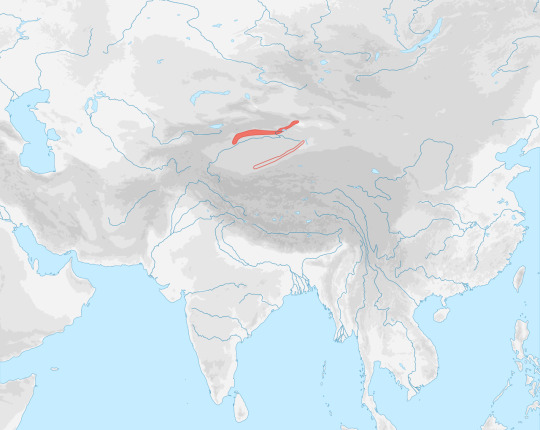
A few thousand years later, scholars discovered manuscripts in northwestern China dating to 500–800 CE that were shown conclusively to be written in a language from an early branch of Indo-European. They named this language Tocharian.

The discovery of Tocharian upset decades of research on ancient Indo-European languages and revitalized interested in them for two reasons:
Nobody even suspected that another branch of Indo-European existed, let alone in China’s Tarim Basin.
It was previously thought that the Indo-European languages were divided into eastern and western groups, based on whether the /k/ sound had changed to an /s/. The western languages that retained the /k/ were called centum languages (the Latin word for ‘hundred’, pronounced with an initial /k/), while the eastern languages with /s/ were called satem languages (the Avestan word for ‘hundred’). Yet Tocharian was a centum language sitting further east than almost any other language in the family. (Linguists later hypothesized that the centum-satem split wasn’t so much an east-west split as it was a spread of /s/ from the center of the language family outward, a change which didn’t reach the furthest members of the family).

Tocharian was written in a variant of Brahmi; here’s a sample of Tocharian script on a wooden tablet:

If you really want to challenge yourself, here’s a problem about Tocharian from the International Linguistics Olympiad:
#Tocharian#linguistics#language#historical linguistics#Indo-European#history#archaeology#China#Siberia#lingblr#langblr
264 notes
·
View notes
Text

"We don't know when fairy tales began or what their origin was, but they are especially prevalent among Indo-European speakers and in the cultures with which Indo-European came in contact on the steppes".
-Brian Hayden.
Arthur Rackham's illustration for The Old Woman in the Wood.
#Brian Hayden#Arthur Rackham#grimm fairy tales#Grimm brothers#the old woman in the woods#indo-european#european tradition#steppe#traditionalism#myth#evola#carl jung#archetypes#joseph campbell#fairy tales#sacrality#sacred
160 notes
·
View notes
Text
Time Travel Question 22: Ancient History X and Earlier
These Questions are the result of suggestions from the previous iteration.
This category may include suggestions made too late to fall into the correct grouping.
Please add new suggestions below if you have them for future consideration. All cultures and time periods welcome.
#Crinoids#Time Travel#Paleozoic#Proto-Indoeuropean#Ancient Religion#Neolithic#The Land of Punt#Ancient World#Linguistics#Early Humans#Tocharian#Indo-European#Yuezhi#Chinese History#Tarim Basin#Steppe Nomads#The Bronze Age#Cretaceous#Pharaoh Hatshepsut#Ancient Egypt#Wu Zetian#Minoans
134 notes
·
View notes
Text
Cuneiform is such a sneaky writing system, so many languages use it. Wonderful discovery.
110 notes
·
View notes
Text



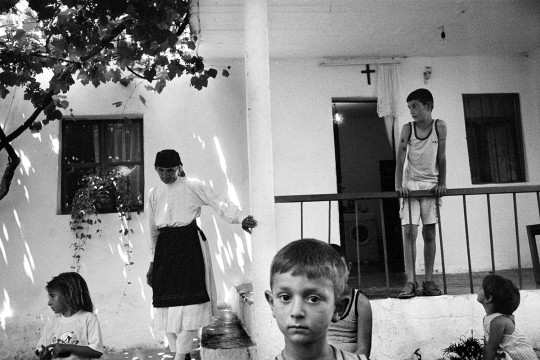


Kanun: Shattered Lives in a Hidden Albania
"Kanun is a body of law which began regulating the lives of the Albanian people between the 13 and 1400's; it is still practiced in many parts of the country, especially in the north. Blood revenge is just the best known aspect of Kanun. It regulated relations with the Catholic church, marriages, property, economic activities, social order and the punishment of those guilty of crimes. Tragedy and drama are basic elements of Kanun. It developed because State control over the administration of justice in that part of the country was historically weak. With the fall of Communism in 1991, and the resulting weakening of law and order nationally, the number of vengeance killings has multiplied. Today, in a country that is trying desperately to rebuilt itself and one where the judicial system is still not able to guarantee the enforcement of State laws, this resorting to assassins in the name of Kanun has assumed really threatening proportions. The Albanian mass media have documented that since the mid-1999's, the crimes, horrors, and atrocities committed in the name of Kanun are a growing cancer even as the precepts of the ancient code are completely misinterpreted and often used as a pretext to justify common criminal acts."
- Massimo Mastrorillo
47 notes
·
View notes
Text

#meme#memes#nerdy memes#programming#linguistics#lingblr#langblr#indo-european#proto-indo-european#historical linguistics#linguistics meme
14 notes
·
View notes
Photo
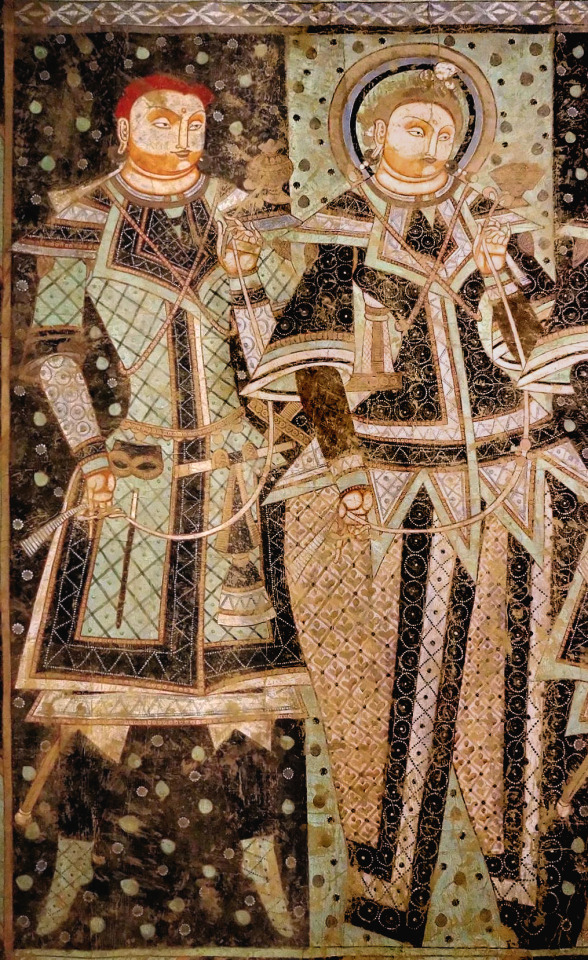
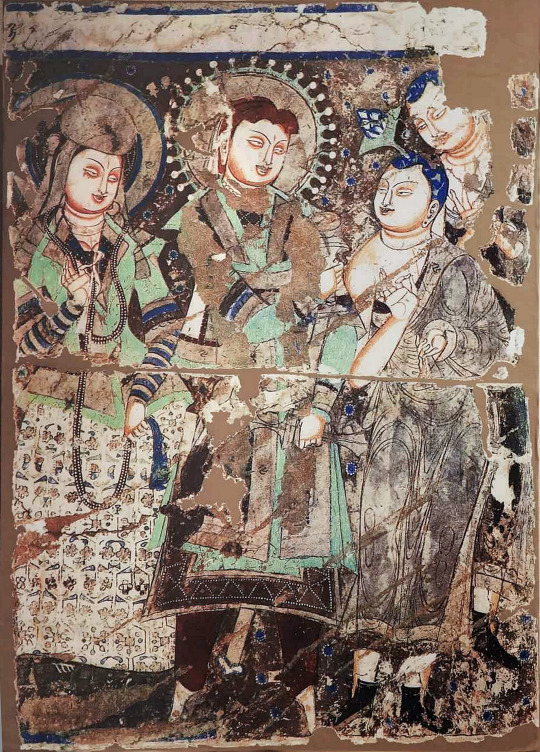
Tocharian donors, Kizil caves, 6-7th century
121 notes
·
View notes
Text
New IE conlang progress
we've got the 1st and 2nd person pronouns working on nouns and verbs oh my fucking god there's so much work to do hopefully we'll be able to update more soon but alas
2 notes
·
View notes
Text
Hittite
In the 1800s archaeologists discovered cuneiform tablets written in an unknown language which they named Hittite.
In the language, Hittite is called 𒌷𒉌𒅆𒇷 nišili ‘the language of the city of Neša’.
In 1902 and 1915, Hittite was shown to be a previously-unknown member of the Indo-European language family, which was remarkable for several reasons:
The Hittite tablets remain to this day the oldest written records of any Indo-European language.
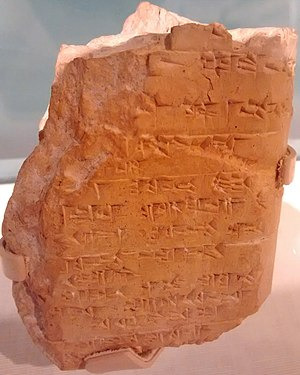
Hittite lacks masculine and feminine grammatical gender like most other Indo-European languages. Instead it contrasted animate vs. inanimate nouns, providing an important piece of evidence that Proto-Indo-European too only distinguished animate vs. inanimate nouns but not masculine vs. feminine.
In 1879, linguist Ferdinand de Saussure suggested that Proto-Indo-European (the first Indo-European language) had a type of sound called a laryngeal consonant, but that this sound had disappeared from all the surviving descendant languages, leaving only subtle traces on the sounds around them. This hypothesis went unproven until the discovery of the Hittite tablets, which contained exactly the laryngeal sounds that Saussure had predicted—a remarkable confirmation of his hypothesis.
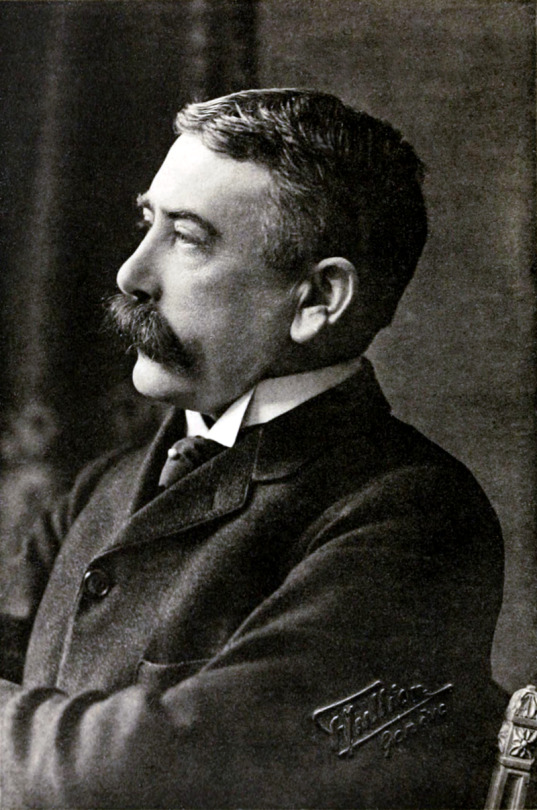
Indo-European was traditionally divided between east and west into centum and satem languages (the words for ‘hundred’ in Latin and Avestan respectively), based on whether they retained the initial /k/ sound (centum languages) or had changed to an /s/ sound (satem languages). Hittite, however, is a centum language with /k/s even though it is located to the east in the satem area. This fact (and the discovery of Tocharian, another exception) forced linguists to rethink the east-west division and instead posit that the change from /k/ > /s/ started in the center of the family and spread outward like a wave.

If you’re interested in learning more about the history of the Indo-European language family, my book recommendation is The horse, the wheel, and language:
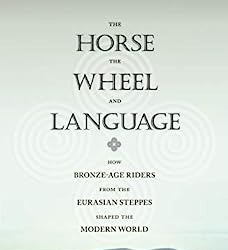
134 notes
·
View notes
Text

"When Christianity is that of the Crusades, of the Reconquista or of the military orders (Templars, Teutonics, Calatrava, Alcantara...), it presents itself as heir to the ancient heroic and warring ideal of the Indo-European tradition, and this aligns with those who, consciously or not, dress as "Christian" the ethnic instinct of Europeans".
-Pierre Vial.
#Pierre Vial#christianity#crusades#reconquista#germanic christianity#Templars#Teutonic order#Order of Alcantara#Order of Calatrava#Indo-european#tradition#european values#alain de benoist
43 notes
·
View notes
Text

Perun
#Perun#pagan#indo-european#heathen#paganism#mythology#aesthetic#ethereal#god#thunderer#slavic#painting#drawing#illustration#traditional art#traditional drawing
10 notes
·
View notes
Text
I know this isn't everybody's cup of tea, but it is mine. I love the history of languages. Comes of teaching a very old one, I guess.
20 notes
·
View notes
Text
Greetings, friends. How are you?
I too am well. This blog is gonna consist primarily of my personal interpretations of reconstructed Proto-Indo-European deities via comparative linguistics and mythology, and attempts to flesh them out in the name of detailed religious practice with possible syncretism (not at all uncommon for IE culture).
There will also definitely be some talk of Hellenic deities as it is my primary pantheon as of writing this.
The primary sources I use for establishing what deities to reconstruct are the Senowera/Sénā Swedhā́ document, Arya Akasha, and Ceisiwr Serith's blog. The Senowera/Sénā Swedhā́ document has the widest selection of PIE deities, so it is often my jumping off point, although I do not agree with all of it reconstructions, Mawortes for example. I highly recommend checking out the Looking At the Deiwos blog here on tumblr. It's a great intro to the deities, uses most of the resources I've mentioned above, and is an all-around great resource. I often feel their entries on the gods are a bit lacking in detail but I am a nerd who obsesses over minutiae and my desire to explore some more complex and theoretical ideas about the gods is why I'm starting this blog.
DISCLAIMER: I'm not an academic or a scholar, just a nerd. I rarely sight my sources and typically do so improperly because, frankly, that's tedious. I'm not trying to reconstruct the historic PIE gods entirely accurately, others have done that to my satisfaction. I'm trying to, primarily, flesh out the underdeveloped deities with some more speculative reconstruction for current religious purposes.
I also recommend Ceisiwr Serith's book on the subject, Deep Ancestors: Practicing the Religion of the Proto-Indo-Europeans. It adds a lot of detail to PIE theology, cosmology, and above all else it is an invaluable resource on ritual and it's extremely important structure. Incredible read for those of us who prefer a detailed and ordered look a such a religion. We are definitely gonna get into a lot of other things, as one of the main ideas behind my creating this blog is to expand upon the foundational resources by fleshing out the deities, albeit very theoretically and by potentially engaging in syncretism rather than focusing purely on what is reconstructable.
My reasoning for this approach is such:
1 - We cannot and never will gain as clear a picture of PIE deities, their characterization, and their function as we have for almost any of their descendant cultures. However, I consider this kind of understanding to be important, if only in a UPG sense.
2 - One of the main appeals to Swedhuismos to me, and I imagine many others, is its almost all-encompassing pagan nature, with the remarkable diversity of the many descendant traditions. A lot of pagans connect with the spiritual traditions of their ancestors but many also acknowledge a remarkable diversity of ancestry and consequently the many beautiful traditions, especially those of us in the US. Swedhuismos being the common ancestor of so many traditions has a certain appeal to it by encompassing, and sort of reverse syncretising them together if you will.
3 - Syncretism was extremely common among IE religions and seeing as recreating any of them perfectly is both near impossible if not entirely in a practical sense, not to mention the issue of compatibility with modern society, certain alterations are simply a fact of reconstruction. And we can use this to our advantage in the creation of a more detailed theology.
Let's get into it!
Proto-Indo-European Deities:
Rudlós
Part 1: Introduction and Cognates
Part 2: Comparison of Cognates
Part 2.5: Additional Possible Cognates
Part 3: Leudheros, Aspect or Son?
Part 4: Worunos, King of the Night Sky
Part 5: Who is Welnos?
Part 6: Character of a God
Ṛ́tkonā
Part 1: Introduction and Cognates
Part 2: Comparison of Cognates
Part 3: Character of a Goddess
Paxuson
Part 1: Introduction and Comparison of Cognates
Part 2: Welnos
Part 3: Character of a God
Leudhero & Leudhera
Part 1: Leudheros, Aspect or Son?
Part 2: Character and Worship
Skuda(Scythian) Deities:
The Scythian "Ares"/Pṛta
The Scythian "Ares": Arms for the Arm God
Hellenic(Greco-Roman) Deities:
Ares
Ares/Thracian "Dionysos", A cognate of Rudlos?
Raetic(Etruscan) Deities:
Intro to Etruscan Religion
Śuri
Part 1: The Black, Forgotten King of the Manes
Part 2: Indo-European God of fire
#proto indo european religion#proto indo european pantheon#proto indo eauropean religion#proto indo european paganism#PIE pantheon#PIE paganism#PIE reconstructionism#PIE religion#paganblr#paganism#neopaganism#reconstructionist paganism#polytheism#PIE polytheism#deity worship#deity devotion#pagan revivalism#pagan#polytheist#deities#indo european#indo-european#proto-indo-european#indo european religion
2 notes
·
View notes
Text
*Deh₂nu
*Deh₂nu- is a hypothetical goddess of water in Proto-Indo-European mythology, with connections to the names of rivers like the Danube, Don, Dnieper, and Dniester, as well as the Vedic deity Dānu, the Irish Danu, and the Welsh Dôn. Despite acknowledging a possible lexical connection, Mallory and Adams contend that there is not enough evidence to support the idea that a distinct river goddess existed in Proto-Indo-European beliefs. They primarily highlight the Indic tradition's understanding of river deification. Furthermore, Mallory and Adams suggest that a theory for a sea god called *Trih₂tōn—whose name is derived from the Greek Triton and the Old Irish word for sea, trïath—is unsupported by the lack of a corresponding sea god in Irish mythology and only minor lexical similarities. The Ossetian god Donbettyr is also mentioned in the story. Who is placated by gifts to keep the waterwheel turning, and who Donnán of Eigg proposes as a Christian equivilent of this figure.
Moreover, this deity and the Dan river in Centeral Asia may have similar etymologies.
She is frequently seen as the mother of a mythical tribe, the *Deh₂newyóes, in many Indo-European cultures; these tribes are deduced from the Vedic Danavas, the Irish Tuatha Dé Danann, the Greek Danaoi, and the Norse Danes. Under Bel's leadership, this tribe is said to have fought a hero called *H₂nḗrtos, which could connect them to characters like the Norse god Njord, the Nart from the Nart saga, and Indra's epithet nrtama.
#Irish#Vedic#Norse#Nart#Mallory#Irish Danu#Welsh Dôn#Irish mythology#hypothetical goddess#Proto-Indo-European#Welsh#Adams#Indic#Greek#Old Irish#Ossetian#Christian#Dan#Central Asia#Indo-European#Vedic Danavas#Tuatha Dé Danann#Danaoi#Bel#deity#sea#river#Norse Danes#tribe#druidicentropy
9 notes
·
View notes